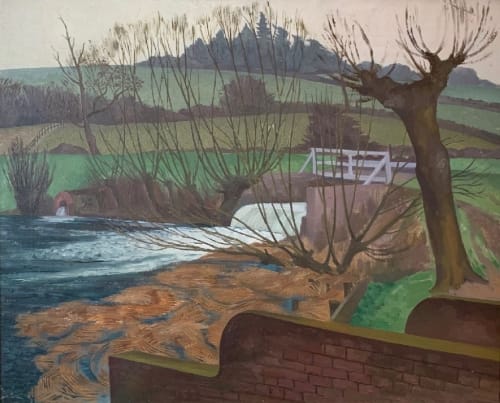John Nash was an English artist, illustrator and printmaker. He was the younger brother of the artist Paul Nash, who was a great source of encouragement for him. Indeed, it was an exhibition he had with his brother in 1913 that marked his first success and led to him becoming a founder-member of the London Group.
In 1916, Nash joined the Artist's Rifles and served with them until 1918 when he began work as an official war artist. Nash produced his most famous work, Over the Top, as a result of his experiences. After the war his works tended to be landscapes, but these seemingly peaceful scenes were undercut by the sense of unease that prevailed in post-war England.
Nash was a founder-member of the Society of Wood Engravers (1920), became a member of the Modern English Watercolour Society (1923), and from 1924-29, taught at the Ruskin. From 1934-40 he also taught at the Royal College of Arts, focusing on lithography and wood engraving.
During the Second World War, Nash initially served in the Observer Corps, then in the Admiralty from 1940 as an official war artist. A year after his demobilisation, Nash began teaching at the Royal College of Art, the Flatford Mill field studies centre, and Colchester Art School. In 1946 he co-founded Colchester Art Society. Nash was made an Associate Royal Academician in 1940, and a full Royal Academician in 1951. He was awarded CBE in 1964, and was given the first retrospective exhibition at the Royal Academy for a living painter, in 1967. Nash died ten years later in Colchester.

